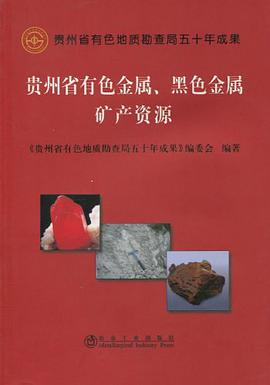

具体描述
《定量化学分析》内容简介:This text brings together the individuals and the desire to develop a text for undergraduate students who have English as a second language. Our initial focus wasundergraduate students with chemistry major in the College of Chemistry and MolecularEngineering, Peking University, Beijing, China, but now we hope and expect that otherundergraduate students may be able to learn more easily with this text as they cope withthe English language and the essentials of analytical chemistry.
作者简介
目录信息
CHAPTER 1 INTRODUCTION OF ANALYTICAL CHEMISTRY 1.1 What is Analytical Chemistry 2 1.2 Steps in the Development of an Analytical Method 5 1.3 Classification of Quantitative Analytical Methods 7 1.3.1 Chemical Analysis 7 1.3.2 Instrumental Analysis 8 1.4 Principles of Volumetric Titration 8 1.4.1 Basic Terms 9 1.4.2 Requirements of Titration Reactions 9 1.4.3 Classification of Titration Processes 10 1.4.4 Primary Standards and Standard Solutions 10 1.4.5 Basic Apparatus in Chemical Analyses 11 1.5 Calculations in Volumetric Titration 15 1.5.1 Preparation of Standard Solutions 15 1.5.2 Titration Results 18CHAPTER 2 DATA ANALYSIS 22 2.1 Error and Classification 23 2.1.1 Accuracy and Precision 23 2.1.2 Errors and Deviation 24 2.1.3 Systematic and Random Errors 25 2.2 Distribution of Random Errors 26 2.2.1 Frequency Distribution 27 2.2.2 Normal Distribution 28 2.2.3 Predicting the Probability of Random Errors--Area under Gaussian Curve 30 2.3 Statistical Data Treatment 31 2.3.1 Estimation of Population Mean (μ) and Population Standard Deviation (α) 31 2.3.2 Confidence Interval for Population Mean 34 2.3.3 Statistical Aids to Hypothesis Testing 37 2.3.4 Detection of Gross Errors 42 2.4 Propagation of Error 43 2.4.1 Systematic Errors 43 2.4.2 Random Errors (Standard Deviation) 43 2.4.3 Maximum Errors (ER) 44 2.4.4 Distribution of Errors 44 2.5 Significant Figure Convention 45 2.5.1 Significant Figures 45 2.5.2 Numerical Rounding in Calculations 47CHAPTER 3 ACID-BASE EQUILIBRIUM 50 3.1 Equilibrium Constants and Effect of Electrolytes 51 3.2 Acid-base Reactions and Equilibria 53 3.2.1 Acid and Base--Bronsted Concept 53 3.2.2 Dissociation of Acid or Base and Acid-base Equilibria 55 3.2.3 Magnitude of Dissociating Species at a Given pH: x-values 57 3.3 Solving Equilibrium Calculations Using pH Calculations as an Example 61 3.3.1 General Approaches (Systematic Approaches) 61 3.3.2 pH Calculations 64 3.4 Buffer Solutions 71 3.4.1 pH Calculations of Buffer Solutions 71 3.4.2 Buffer Capacity 72 3.4.3 Preparation of Buffers 74CHAPTER 4 ACID-BASE TITRATION 78 4.1 Acid/Base Indicators 79 4.1.1 Principle 79 4.1.2 Examples 80 4.1.3 Titration Errors 82 4. 1.4 Factors Influencing Performance 82 4.2 Titration Curves and Selection of Indicators 83 4.2.1 Strong Acids (Bases) 83 4.2.2 Monoprotic Acids (Bases) 86 4.2.3 Strong and Weak Acids (Bases) 91 4.2.4 Polyfunctional Weak Acids (Bases) 92 4.2.5 Mixture of Weak Acids (Bases) 95 4.3 Titration Error Calculations 95 4.3.1 Strong Acids (Bases) 95 4.3.2 Monoprotic Weak Acids (Bases) 96 4.3.3 Polyfunctional Acids (Bases) 97 4.4 Preparation of Standard Solutions 98 4.4.1 Standard Acid Solutions 98 4.4.2 Standard Base Solutions 99 4.4.3 The Carbonate Error 100 4.5 Examples of Acid-base Titrations 101 4.5.1 Determination of Total Alkalinity 101 4.5.2 Determination of Nitrogen 102 4.5.3 Determination of Boric Acid 103 4.6 Acid-base Titrations in Non-aqueous Solvents 104 4.6.1 Non-aqueous Solvents 104 4.6.2 Examples of Non-aqueous Titrations 105CHAPTER 5 COMPLEXATION REACTION AND COMPLEXOMETRIC TITRATION 108 5.1 Complexes and Formation Constants 109 5.1.1 Formation Constants 109 5.1.2 Concentration of MLn in Complexation Equilibria 111 5.1.3 Ethylenediaminetetraacetic Acid (EDTA) and Metal-EDTA Complexes 113 5.1.4 Side Reaction Coefficients and Conditional Formation Constants in Complexation Reactions 115 5.2 Metallochromic Indicators 122 5.2.1 How a Metallochromic Indicator Works 122 5.2.2 Color Transition Point pM ((pM)t) for Metallochromic Indicators 123 5.2.3 Frequently Used Metallochromic Indicators 125 5.3 Titration Curves and Titration Errors 126 5.3.1 Titration Curves 126 5.3.2 Titration Errors 128 5.3.3 pH Control in Complexometric Titrations 129 5.4 Selective Titrations of Metal Ions in the Presence of Multiple Metal Ions 130 5.4.1 Selective Titration by Regulating pH 131 5.4.2 Selective Titration Using Masking Reagents 133 5.5 Applications of Complexometric Titrations 137 5.5.1 Buffer Selection in Complexometric Titrations !37 5.5.2 Titration Methods and Applications 138 5.5.3 Preparation of Standard Solutions 142CHAPTER 6 REDOX EQUILIBRIUM AND TITRATION 146 6.1 Standard Electrode Potentials, Formal Potentials and Redox Equilibria 147 6.1.1 Standard Electrode Potentials 147 6.1.2 The Nernst Equation and Formal Potentials 149 6.1.3 Factors Affecting the Formal Potential 150 6.1.4 The Equilibrium Constant of Redox Reaction 154 6.2 Factors Affecting the Reaction Rate 155 6.2.1 Concentrations 156 6.2.2 Temperature 157 6.2.3 Catalysts and Reaction Rate 157 6.2.4 Induced Reaction 157 6.3 Redox Titrations 158 6.3.1 Constructing Redox Titration Curves 158 6.3.2 Indicators 162 6.3.3 Auxiliary Oxidizing and Reducing Agents 164 6.4 Examples of Redox Titrations 165 6.4.1 Potassium Permanganate (KMnO4) 165 6.4. 2 Potassium Dichromate (K2Cr2O7) 168 6.4. 3 Iodine: Iodimetry and Iodometry 169 6.4. 4 Potassium Bromate (KBrO3) 173 6.4.5 Ceric Sulfate (Ce(SO4)2) 174CHAPTER 7 PRECIPITATION EQUILIBRIUM, TITRATION, AND GRAVIMETRY 177 7.1 Precipitation Equilibria and Solubility 178 7.1.1 Solubility of Precipitates in Pure Water 178 7.1.2 Ionic Strength and the Solubility of Precipitates 178 7.1.3 Common Ion and the Solubility of Precipitates 179 7.1.4 pH and the Solubility of Precipitates 179 7.1.5 Complexing Agents and the Solubility of Precipitates 182 7.2 Precipitation Titrations 184 7.2.1 Titration Curves 184 7.2.2 Examples of Methods Classified by Endpoint Indication 186 7.2.3 Preparation of Standard Solutions 189 7.3 Precipitation Gravimetry 190 7.3.1 Classification of Gravimetric Methods of Analysis 190 7.3.2 General Procedure and Requirements for Precipitation 190 7.3.3 Precipitate Formation 192 7.3.4 Obtaining High Purity Precipitates 193 7.3.5 Experimental Considerations 197 7.3.6 Examples of Organic Precipitating Reagents 200CHAPTER 8 SPECTROPHOTOMETRY 206 8.1 Principle of Spectrochemical Analysis 207 8.1.1 Properties of Electromagnetic Radiation 207 8.1.2 Interaction of Electromagnetic Radiation with Matter 208 8.1.3 Beer's Law, the Quantitative Principle of Light Absorption 213 8.1.4 Limitations to Beer's Law 216 8.2 Principles of Instrumentation 217 8.2.1 Instrumentation 217 8.2.2 Instrumental Errors in Absorption Measurement 226 8.3 Applications of Spectrophotometry 226 8.3.1 Single Component Analyses 226 8.3.2 Multicomponent Analyses 228 8.3.3 Spectrophotometric Titrations 230 8.3.4 Studies of Complex Formation in Solutions 231 8.3.5 Measurements of Dissociation Constants of Organic Acids/Bases 233CHAPTER 9 INTRODUCTION TO ANALYTICAL SEPARATION 238 9.1 General Considerations of Separation Efficiency 239 9.2 Separation by Precipitation 241 9.2.1 Inorganic Precipitants 241 9.2.2 Organic Precipitants 242 9.2.3 Coprecipitation of Species in Trace Amounts for Separation 243 9.2.4 Improving the Selectivity of Precipitation Separation 244 9.3 Separation by Extraction 245 9.3.1 Principles for Liquid-liquid Extraction 245 9.3.2 Percent Extraction 247 9.3.3 Extraction of Inorganic Species 249 9.3.4 Other Extraction Methods 254 9.4 Separation by Ion Exchange 257 9.4.1 Ion Exchange Resins 257 9.4.2 Cross-linkage and Exchange Capacity 259 9.4.3 Ion Exchange Equilibria 260 9.4. 4 Applications of Ion Exchange Separation 261 9.5 Separation by Chromatography 263 9.5.1 Classification 263 9.5.2 Chromatogram 264 9.5.3 Column Chromatography 265 9.5.4 Planar Chromatography 266CHAPTER 10 SOLVING A REAL ANALYTICAL PROBLEM 271 10.1 Definition of the Analytical Problem 272 10.2 Literature Review 273 10.3 Choosing a Method 275 10.4 Developing and Evaluating the Method 276 10.4.1 Selectivity 276 10.4.2 Accuracy 277 10.4.3 Sensitivity and Linear Dynamic Range 279 10.5 Conclusion 280APPENDICES 281 Appendix A References 281 Appendix B Indicators 283 Appendix C Activity Coefficients(г) for Ions at 25℃ 285 Appendix D Constants for Acid-base, Complexometric, Redox, and Precipitation Titrimetry 286 Appendix E Molecular Masses 299ANSWERS 302INDEX 305PERIODIC TABLE OF THE ELEMENTS 309
· · · · · · (收起)
· · · · · · (收起)
读后感
评分
评分
评分
评分
评分
用户评价
评分
抄的书,不多说,英语更不多说
评分抄的书,不多说,英语更不多说
评分抄的书,不多说,英语更不多说
评分抄的书,不多说,英语更不多说
评分抄的书,不多说,英语更不多说
相关图书
本站所有内容均为互联网搜索引擎提供的公开搜索信息,本站不存储任何数据与内容,任何内容与数据均与本站无关,如有需要请联系相关搜索引擎包括但不限于百度,google,bing,sogou 等
© 2025 book.wenda123.org All Rights Reserved. 图书目录大全 版权所有




















